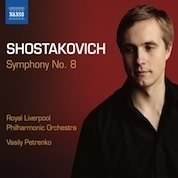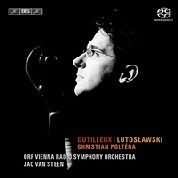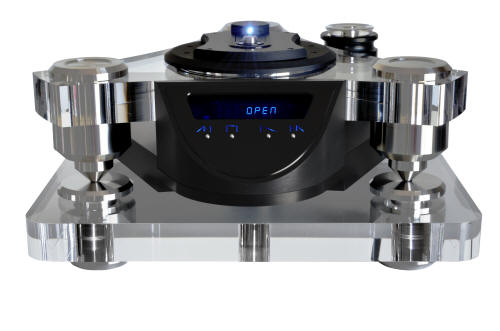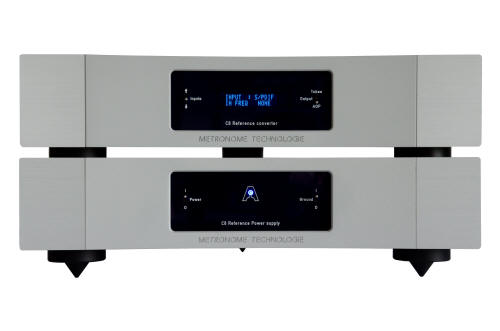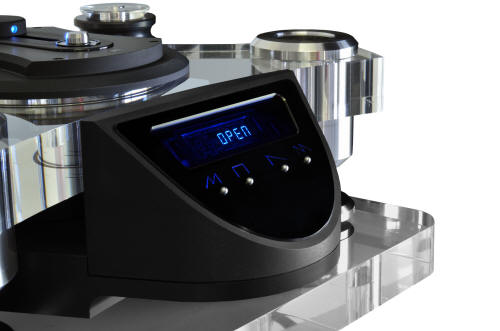|
|
You are reading the older HTML site
Positive Feedback ISSUE 68
metronome The T3A and Calypso Transports and the C8 Reference DAC as reviewed by Marshall Nack
Digital has me confused. I had just discovered, admittedly late in the game, hi-res PCM source at higher sampling rates via a music server. Plus I heard DSD and double DSD files via a music server at the New York Audio Show. Both of these formats are so good, they could make you forget analog. During my long allegiance to Super Audio CDs, when played through a good SACD player like my Accuphase DP-600, I found them vastly superior to Red Book, but never competitive with analog. That's how things stood when the Metronome front-end took up residence. Which it literally did: the C8 Reference DAC needs two shelves for its twin chassis; the T3A Signature Transport takes a third. Towards the end of the audition, when the Calypso Reference Transport replaced the T3A, another shelf was required. So, now four shelves were occupied, virtually an entire rack. Guess what? The Metronome front-end playing Red Book is cleaving the firmament: forcing me to re-visit the digital pecking order.
C8 DAC Contemporary Trends in Digital If you've been to any audio shows or demo rooms lately, you may have picked up on the following trends in current digital playback: Soft transients. Where's the attack? The start of the note has no bite. Excess atmosphere. It doesn't matter what CD you put on—there is always a pronounced hall sound. This is most noticeable in the elongated reverb in the tail of the note. The stage is drenched in ambience. Blurry imaging.Image boundaries bleed, like a watercolor brushstroke. More and more, the order of the day veers to politeness and it seems like every room—even the smallest hotel guest room—is able to recreate a pronounced ambient sound. The Metronome T3A/C8 runs counter The C8/T3A refreshingly counters each of these points. Let's talk about transients first. The Metronome refuses to soften transients. They come at you straight up—and sometimes with a lot of force. I intentionally wrote that sentence that way because, while the Metronome can dole out slam with the best of them, it does not do so out of habit—only when necessary. Many components known for powerful, weighty transients impose it unconditionally due to a bump in the mid-bass. This becomes an anchor, a persistent heaviness. I would not describe the Metronome this way because its frequency response is evenly distributed. it Ain't Timid and it Ain't Euphonic Take note that the Metronome treble can hit with as much force as its low-end. This is so different from how most components handle the top-end. Typically, it is rolled off and/or sweetened. The Metronome refuses to do that. This means that it occasionally lets rip treble projectiles that could border on unpleasant, as when doubled piccolos cut through the orchestral din. But you know what? That's what happens in Carnegie Hall, too. On the other hand, some digital components handle the treble like brutes and make you want to leave the room. The quality of the Metronome's treble is always crisp, clean and undistorted, yet it never trespasses into that kind of direct, unpleasant SPL. How did the designer accomplish that? My impression is the Metronome treble is refreshingly honest.
Compared to Accuphase DP-600 What is most observed with my reference Accuphase DP-600 is the space, a deeply reverberant and diffuse acoustic. The atmosphere swirls around, like puffy clouds on a breezy day. The Accuphase has a soft attack, lingering decay trails, and it emphasizes the sustain. The Metronome emphasizes the attack. There is nothing soft or blurry about the C8/T3A's presentation—no halo around instruments or pervasive ambiance. And while it apportions body in equal dollops on top and bottom, the treble lacks the refined detail of the Accuphase. It seems a bit dry in comparison, as if some of the air has been vacuumed up. (N.B.: I'm not so sure this treble refinement is in the signal. It could be a pleasant Accuphase artifact.) The Accuphase is most exciting in the treble. The C8/T3A generates excitement in all bands—they all share the qualities of crispness and definition. Unlimited Scaling Ability Maybe you think your digital front-end is terrific—I think mine is. I've heard many and I chose carefully. Still, it remains touch and go on those really big orchestral scores. I'm thinking of something like the Shostakovich Symphony No. 8, specifically the new set with Vasily Petrenko leading the Royal Liverpool Philharmonic Orchestra (Naxos 8.572392). This is one of those refreshing examples of a conductor and orchestra coming out of nowhere and taking the classical music world by storm. BTW, only their Shostakovich series garners press acclaim.
When the score calls for fff, the Metronome delivers in spectacular fashion. At peak SPLs, it will get as loud as you can tolerate—the blast stays open and clear; the stage doesn't shake and collapse in on itself. Dynamic range is A+. I bet the C8's massive outboard power supply has a lot to do with this. Dynamics aside, there are sonic issues with this CD, which the C8/T3A does not hide. Strings are so tightly focused that the entire first violin section images like one humongous, over-blown instrument. It's very left/right; center fill is lacking. Tone is a little thin and somewhat metallic. The over-produced aspects of this less than audiophile-grade recording are very clearly in evidence. The Big Contest: Can 16/44 Compete with SACD? Let's move on to the Big Contest. I ran many demos with hybrid SACDs, the 16/44 layer played over the C8/T3A vs. SACD over the Accuphase. Before each demo I reminded the audience of the received wisdom: "On paper, DSD has eight times the information and much wider dynamic range than Red Book. Now, tell me what you hear, as far as detail, resolution and dynamics."
Pitting a well-recorded SACD against Red Book, I used Track 5 of Toute Un Monde Lointain from Dutilleux/Lutoslawski, an SACD featuring cellist Christian Poltera (BIS-SACD-1777). With this CD, the C8/T3A soundstage pushed up against the boundaries of the room, separating out instruments and casting them into the far corners. The Metronome soundstage is rock-solid, with a visual 3-D quality and maximum clarity. It cuts through the fog, placing instruments where they belong, leaving no uncertainty about what's going on. It does not engage in obfuscation. "Anybody?" Silence. Nobody would step up and proclaim one was better than the other in these particulars. I find this baffling: How can that be? I'll volunteer an opinion then. Hey guys, it's not just the specs or the technology. More than that, it's the implementation, it goes back to circuit design and parts quality. In this case, we faced off the oldest digital format, which started out as "perfect sound forever" and nowadays is generally recognized to be flawed, against an enhanced format developed for audiophiles. Red Book matched the strengths of SACD, and then surpassed it everywhere else. The engineers/designers who voice the product have to know what is and what is not good sound. Ultimately, format is just one factor in the sound quality equation.
the Calypso Reference Transport Towards the end of the audition, the importer exchanged the T3A for the Calypso Reference Transport. Oh boy, now we were really having fun!
How revolutionary is the Calypso compared to the T3A? In terms of looks—WOW. This thing looks so cool, it's either mid-century Moderne or it flew in through the window from the NSA to read our thoughts. It bears a fair resemblance to some modern vinyl turntables, such as the Transrotor Rondino, with its trio of massive columnar supports.
In terms of sound—WOW. The house sound is there, but another dimension has been introduced. Let's put that Shostakovich Symphony No. 8 back in the tray. As I mentioned earlier, this is a great performance that suffers from poor sound. It always elicited critical comments for tone and soundstaging. No more. String tone is marvelous and the stage is unblocked. My God, it sounds like there's a battery of speakers lining the front wall, projecting a seamless bank of images across the width. The Calypso does some incredible things with space, apportioning instruments around the stage so you get a fair idea of just how many players comprise that violin section. There's a lot more ambiance, but it's not the implausible kind that haloes individual instruments as I described above. Everything grows in size and fleshiness. The bottom end is big and round, tight and textured. The images are stable, focus is 20/20, but the stage is relaxed—the Calypso does not put a vise-like grip on the stage. Here we have an overall ambiance placing the players together in one space so they are relating to each other. The presentation is very detailed and marvelously acoustic sounding. The Calypso demonstrated this ability to "fix" problems on more than one occasion. I began to think this, and its marvelously acoustic sound, was its signature. (Every machine introduces some signature. There's no escaping that.) The intro of the Calypso forced me re-think the role of the transport. I always figured the DAC was most important in the digital chain.
Technical Highlights T3A Transport The T3A Transport uses a customized Philips CDM12 PRO 2 v 6.8 transport chassis. It has three main Lundahl toroidal power transformers and five independent regulation lines for each critical part of the transport. It upsamples to 24/192. Calypso Transport The Calypso Transport uses the same customized Philips CDM12 PRO 2 v 6.8 transport. It is switchable between 16/44 and 24/192 kHz resolution via a toggle switch on the back. Like the T3A, it has three main power transformers, but six independent regulation lines. It comes with the Silent Base Support platform, a slab of 40mm thick Perpex, and a separate Elektra Power Supply chassis. C8 Reference DAC The C8 Reference DAC uses 4 converters and has two output stage options: solid state and tube. You can switch between them via a front-panel toggle. The tube stage has two current stock 6922 tubes. It has three main toroidal power transformers and eleven independent regulation lines, and can accept USB, TOSLINK, AES/EBU, and S/PDIF files up to 44.1 bit/192kHz. Metronome Options The tube output stage imparted flow and palpability, with a lush and even more credible string tone. It was highly ambient, but a bit soft. Transients were less hard-hitting and pitch could be obscure. The solid-state output is a bit drier, but still far from lean, and lets you hear pitch values. I listened almost exclusively to the solid-state output mode of the C8 DAC. I also preferred the 16/44 mode of the Calypso Transport (without upsampling). The Veloce Preamp arrives Even later in the audition, the Veloce Lithio LS-1 preamp arrived. Suddenly, digital playback was not turning people's heads anymore. They claimed it was not relaxed, there wasn't enough ease. "It feels like the Metronome is working too hard to produce that sound," Lynn remarked. After a bit of head scratching, the light bulb went on. I had the Calypso set to 16/44 and the C8 DAC to its solid-state output mode. I ran around back and flipped the switch on the Calypso to engage upsampling. Yes! That was just the ticket. My reasoning was as follows: the Veloce has sharp transients and crisp edges, compared to the mbl 6010D. Combine that with the straight-talking Calypso at 16/44, it's understandable how it produced those results. Now, I knew from prior trial that upsampling would remove some of the edges and make the sound smoother. Voila! It's great to have these switchable features. Flexibility is a good thing. Cosmetics & Build Quality All of the components share the same handsome, contemporary cosmetics. The T3A transport is a top-loading, slim-line design with a large footprint. The C8 is light weight; its matching power supply is heavier. All have three receptacles on the bottom for a trio of detachable magnetic cone footers (included). I would rate build quality at moderate overall for these kinds of prices. A knuckle wrap to any chassis would produce a ringing tone, for example.
I was short on shelf space, so initially I had the two chassis of the C8 stacked like in the pictures on the web. Don't do that! Stacking produced excessively tight images—and fooled me into thinking this was its character. Not true! When I managed to free up another shelf and separate the chassis, the tightness evaporated and space opened up. Wires For the most part I used K-S Elation! power cords, RCA interconnects and digital cable. I haven't used the Elation! SP/DIF digital cable in a while—I forgot how good it is. The importer loaned me a Van den Hul balanced IC from DAC to preamp, which complemented the speed of the DAC. Dynamic Designs' Nebula VLT Digital Power Cord was a nice alternative, bringing less warmth and more focus. The Stage III Kraken power cord also saw time and did its magic. The dimensions of the stage pushed out, as images became more massive and separated into discrete locations. While I clearly heard the differences from swapping power cords, the Metronome seemed less sensitive than some components. It sounded good with them all.
Conclusion The Metronome front-end is a straight shooter. It bucks the current trends towards inoffensive and polite and gives it to ya unadulterated. Digital through the Metronome is about as good as it gets—and I'm talking Red Book here, which surpassed my reference playing SACD. (I can only imagine what hi-res would be like.) "Well, it sounds like it's worth $33K." My panels' judgment was unequivocal: If the Accuphase DP-600 SACD Player is the pick of the litter at $22K, then the Metronome C8 Reference DAC/ T3A Signature Transport is the one to grab at $33K. And then there's the Calypso transport. Admittedly, in a stratospheric price class, it does things others can't, and pushed through sonic barriers, giving us access to new audio frontiers. Marshall Nack
C8 Reference DAC
T3A Signature Transport
Calypso Reference Transport
Metronome
Audioarts Comments - Metronome The T3A and Calypso Transports and the C8 Reference DAC |









